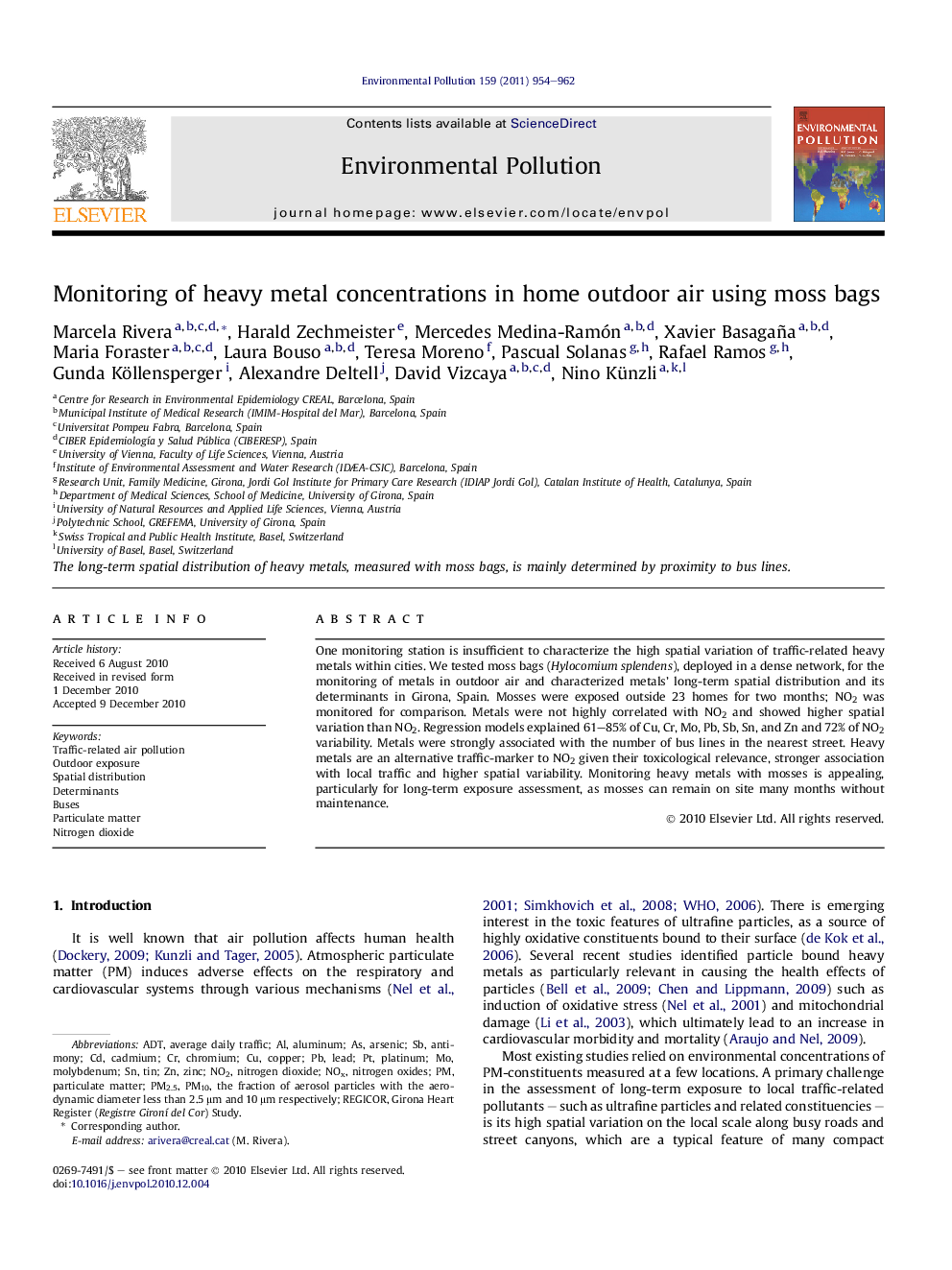| Article ID | Journal | Published Year | Pages | File Type |
|---|---|---|---|---|
| 4424847 | Environmental Pollution | 2011 | 9 Pages |
One monitoring station is insufficient to characterize the high spatial variation of traffic-related heavy metals within cities. We tested moss bags (Hylocomium splendens), deployed in a dense network, for the monitoring of metals in outdoor air and characterized metals’ long-term spatial distribution and its determinants in Girona, Spain. Mosses were exposed outside 23 homes for two months; NO2 was monitored for comparison. Metals were not highly correlated with NO2 and showed higher spatial variation than NO2. Regression models explained 61–85% of Cu, Cr, Mo, Pb, Sb, Sn, and Zn and 72% of NO2 variability. Metals were strongly associated with the number of bus lines in the nearest street. Heavy metals are an alternative traffic-marker to NO2 given their toxicological relevance, stronger association with local traffic and higher spatial variability. Monitoring heavy metals with mosses is appealing, particularly for long-term exposure assessment, as mosses can remain on site many months without maintenance.
Research highlights► Moss bags can be used to measure the metal’s long-term spatial distribution within cities. ► Heavy metals in mosses are not highly correlated with ambient NO2 concentrations. ► Heavy metals show higher spatial variation and association with traffic than NO2. ► Bus lines in the nearest street explain 75–85% of Mo, Cr, Sb, Sn and Cu variability. ► Moss bags are useful for long-term at home exposure assessment in epidemiological studies.
